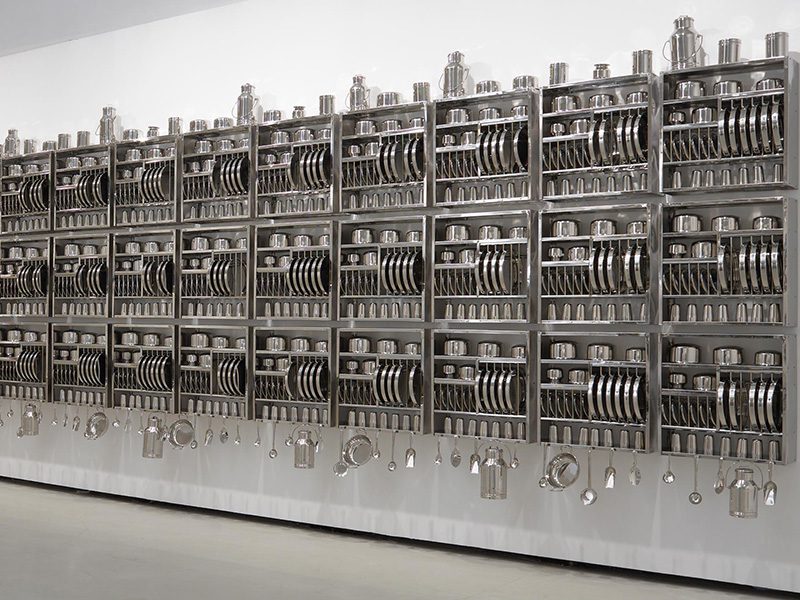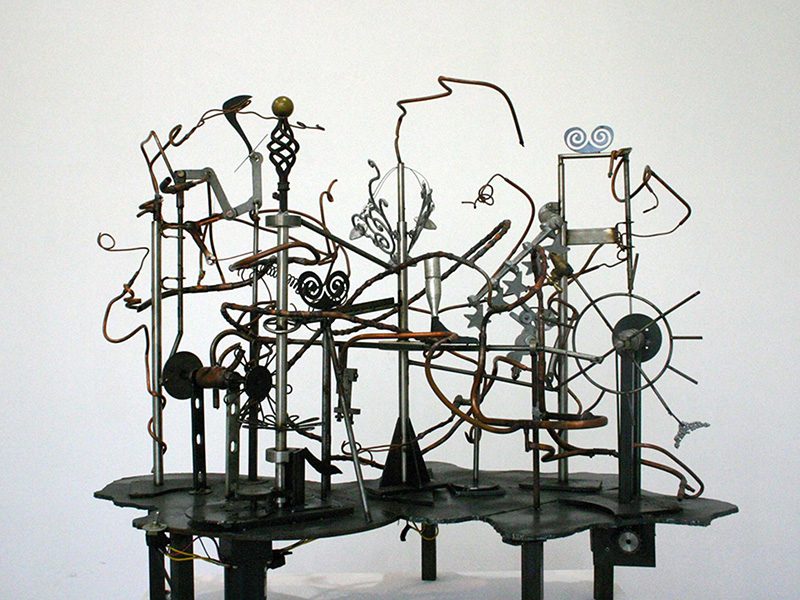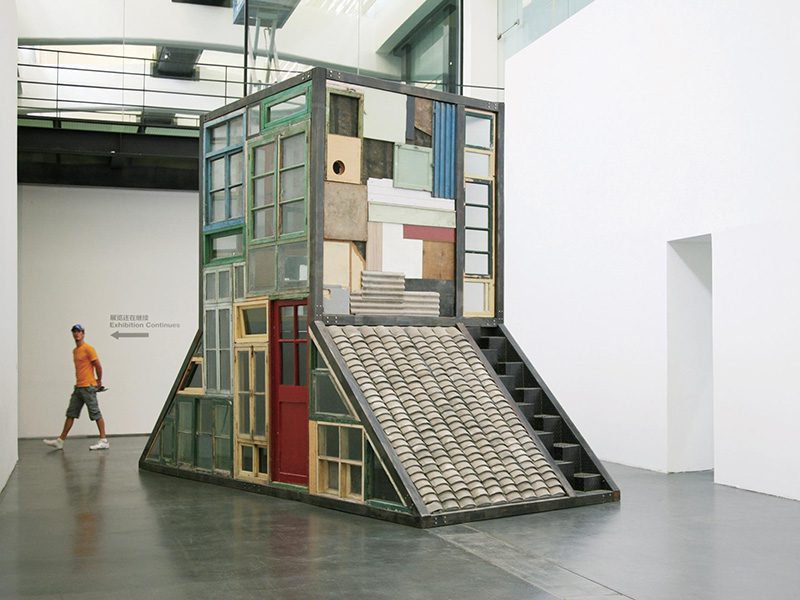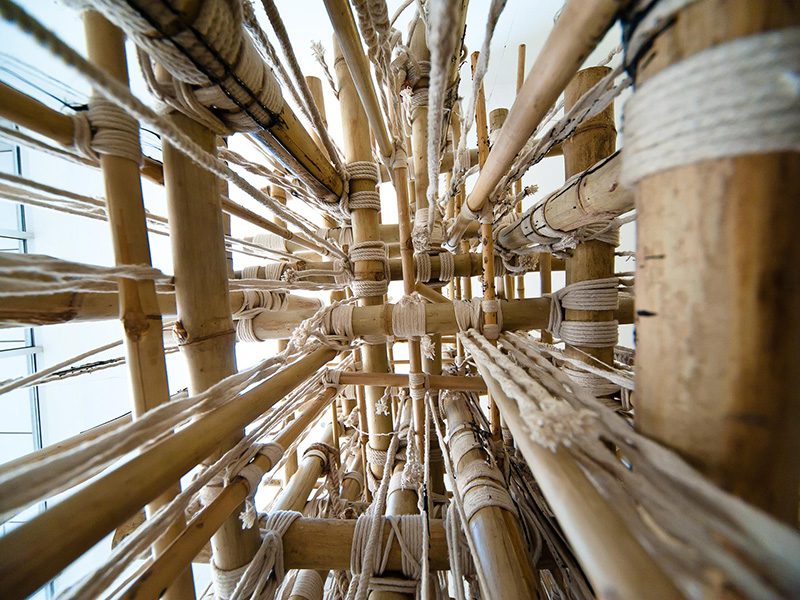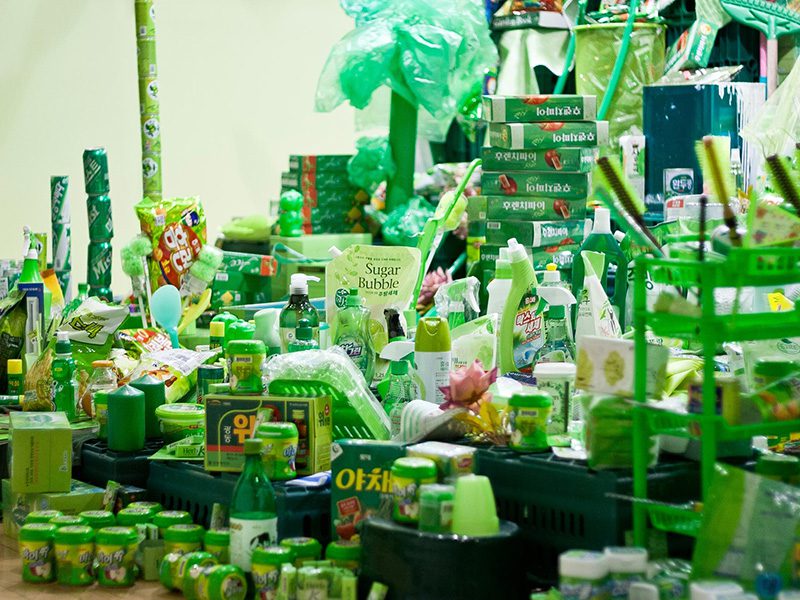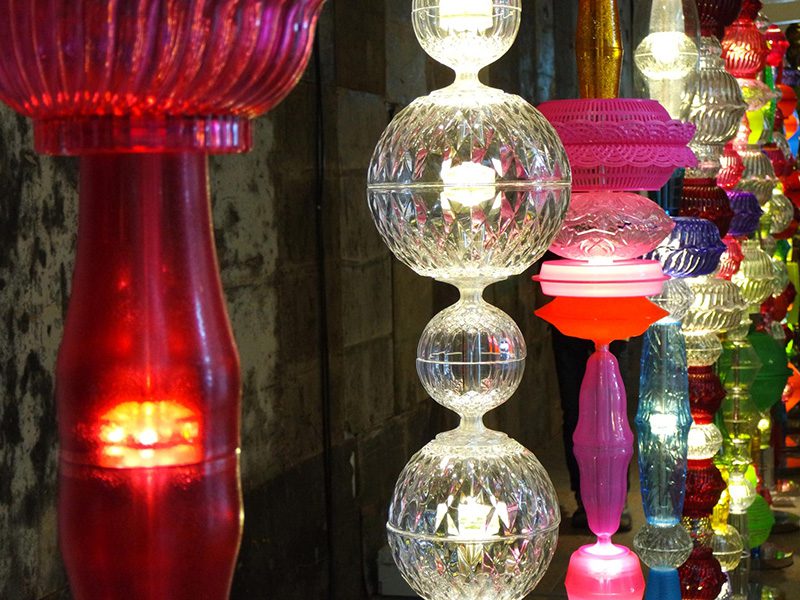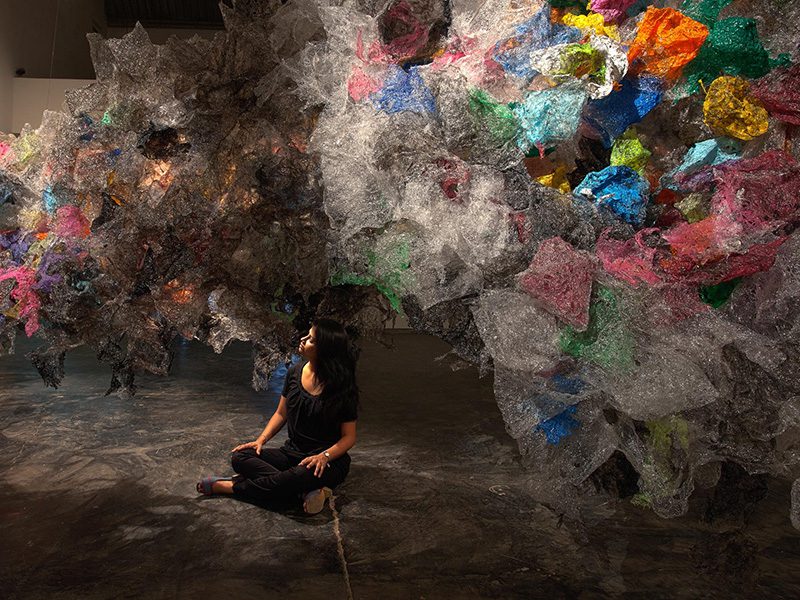ART-PRESENTATION: Megacities Asia
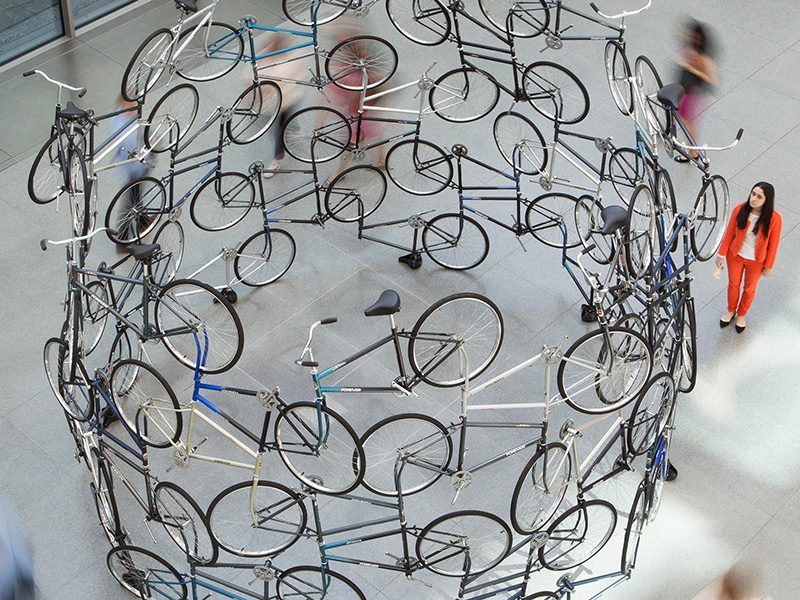 Asia is the world’s most rapidly urbanizing continent, containing more than half of the approximately 30 megacities around the globe. Beijing, Shanghai, Delhi, Mumbai and Seoul have grown at an astounding pace over the last half-century to equal and in some cases exceed the size and urban density of metropolises like Tokyo and New York.
Asia is the world’s most rapidly urbanizing continent, containing more than half of the approximately 30 megacities around the globe. Beijing, Shanghai, Delhi, Mumbai and Seoul have grown at an astounding pace over the last half-century to equal and in some cases exceed the size and urban density of metropolises like Tokyo and New York.
By Dimitris Lempesis
Photo: MFA Boston Archive
The exhibition “Megacities Asia” is the largest contemporary exhibition ever organized at the Museum of Fine Arts, Boston (MFA), 11 artists present 19 works created from accumulations of objects found in their cities in China, India and South Korea, which have seen unprecedented development over the past 50 years. The artists respond to the dynamic, political, environmental and social conditions of these cities through immersive artworks that invite physical interaction. The exhibition extends beyond the Museum into other exhibition and public spaces, onto the Museum’s front lawn and into the city beyond, with a sculpture presented in Marketplace Center near Faneuil Hall.The participating artists are: Ai Weiwei, Choi Jeong Hwa, Subodh Gupta, Han Seok Hyun, Hu Xiangcheng, Aaditi Joshi, Song Dong, Hema Upadhyay, Asim Waqif, Yin Xiuzhen and the collective flyingCity, led by Jeon Yongseok. Several of them are being exhibited in an American institution for the first time, and nearly half of the works were created specifically for Megacities Asia. The dimensions of the immersive installation “8 x 12” by Hema Upadhya are drawn from those of an average family dwelling in Dharavi, the city’s largest slum. Subodh’s Gupta installation “Take off your shoes and wash your hands” is made up of rows of kitchen racks found in urban Indian homes of all classes. Each of the 48 racks references a family unit. Gathered en masse, they suggest a whole community, perhaps gathering for a communal meal, but the individuality of each is lost along the way. Yin Xiuzhen creates works that evoke memory and community, including “Temperature”, which consists of brick rubble scavenged from razed buildings and scattered across the floor, with bits and pieces of fabric peeking out from the cracks. Environmental issues are on the mind of Han Seok Hyun, who collects products in Seoul supermarkets to form green landscapes that evoke the city’s mountainous terrain. “The hills formed in Super-Natural” installation points to citizens’ appetite for consumer products, while at the same time reminding viewers of the equally pressing and sometimes forgotten need to connect with the natural world, which is especially rare in growing cities. When Ai Weiwei was growing up, China’s poor families aspired to own Forever brand bicycles as means of both transportation and socioeconomic mobility. “Forever”, is a circular arrangement of 64 Forever bicycles. With no beginning and no end, the sculpture questions whether something eternal can exist in a quickly changing society. Song Dong grew up during the Cultural Revolution and has watched neighborhoods of his youth radically change as Beijing became an international urban center. As a result, his artistic practice is fueled by nostalgia and respect for traditional methods and materials. “Wisdom of the Poor: Living with Pigeons”, references a traditional courtyard residence found in Beijing’s older neighborhoods.
Info: Curators: Al Miner& Laura Weinstein, Museum of Fine Arts-Boston, 465 Huntington Avenue, Boston, Duration: 3/4-17/7/16, Days & Hours: Mon-Tue & Sat-Sun 10:00-17:00, Wed-Fri 10:0-22:00, www.mfa.org
